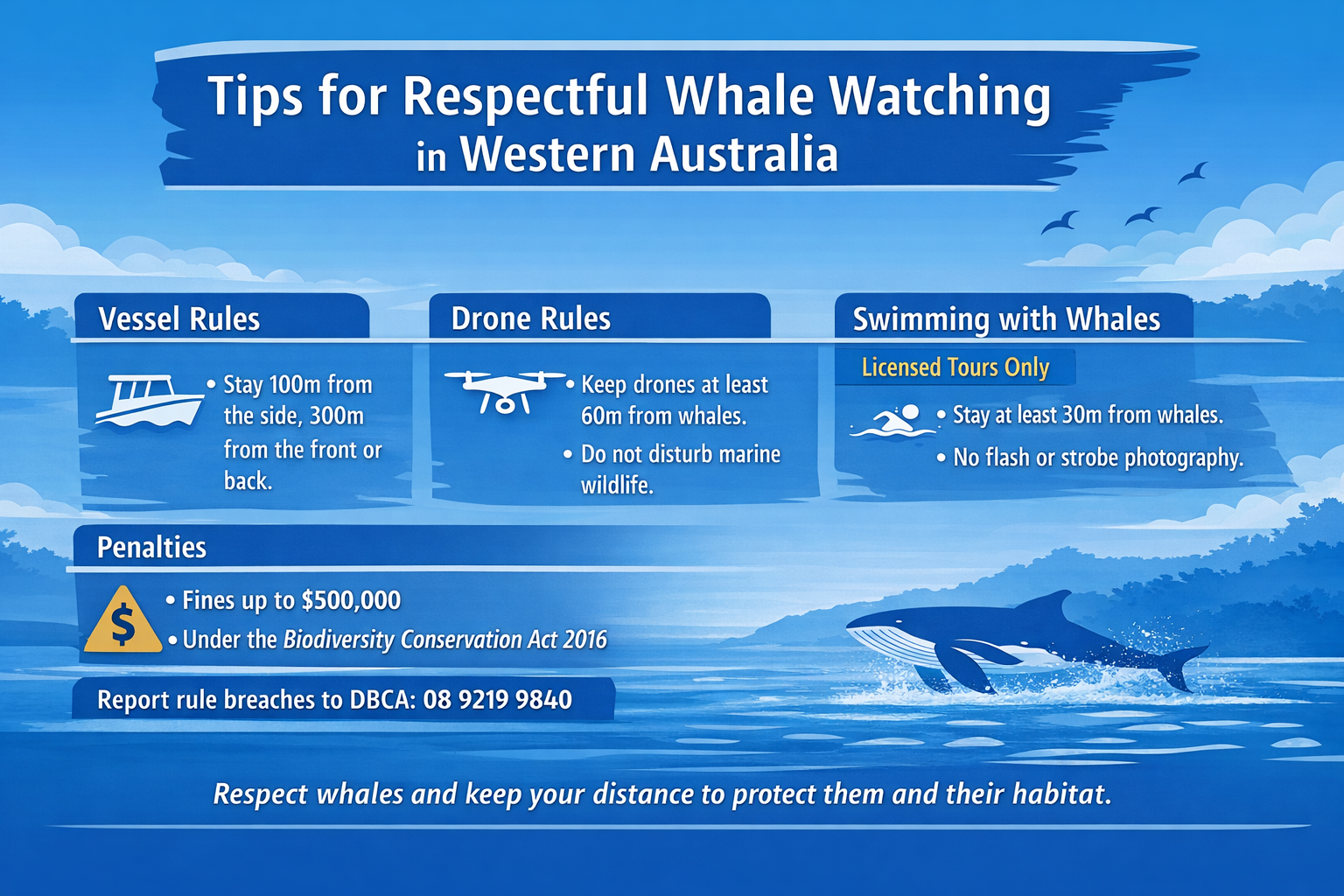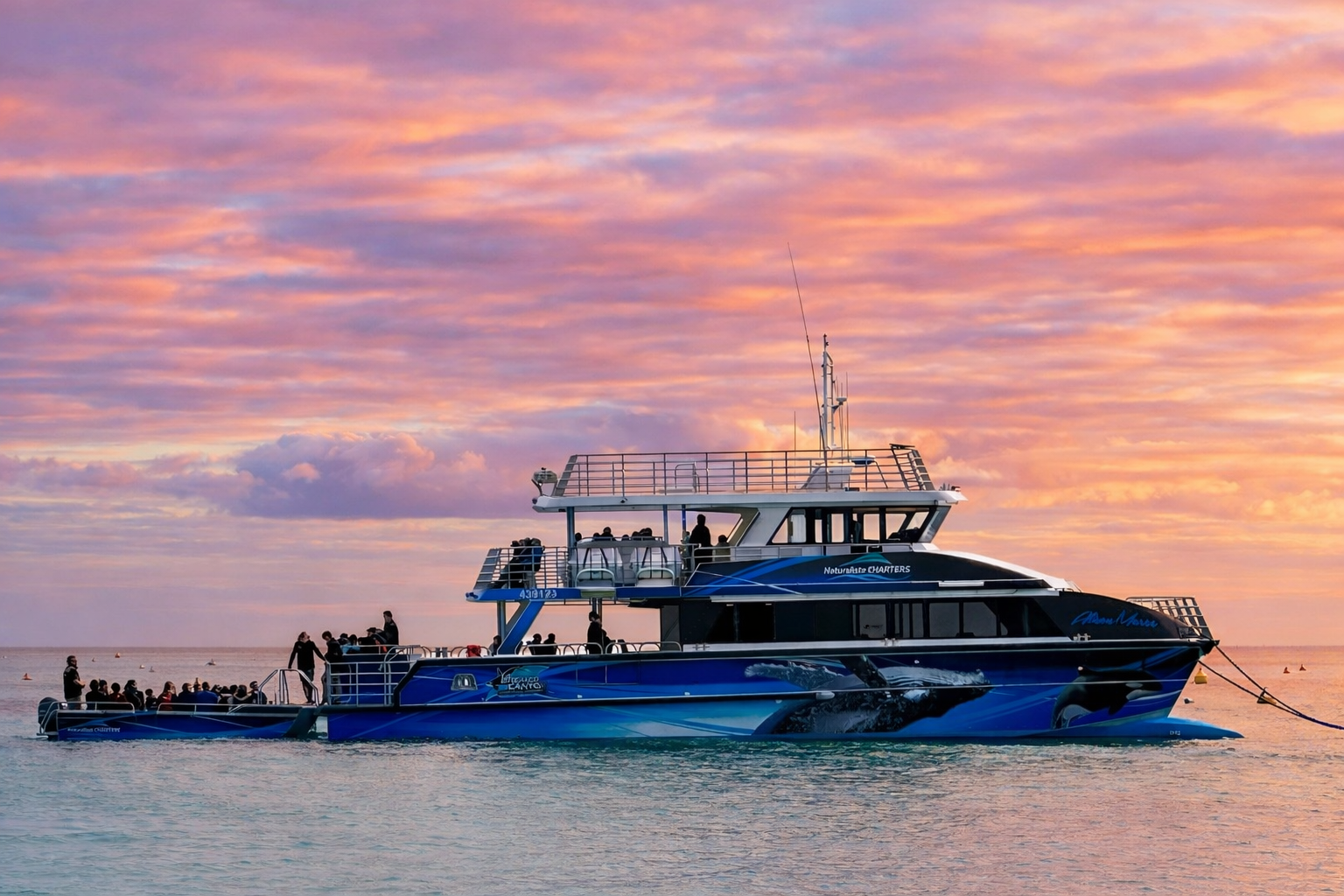How Long Can Whales Hold Their Breath?
Published by Alison Cross on July 6, 2022
This blog recognises the Traditional Custodians of the Whadjuk boodja on which it was written. We acknowledge their connection to land, sea, and community, and pay our respects to Elders past, present, and future.
The Science of Respiration in Whales
Breathing, or respiration, is the process of taking in oxygen, converting it into energy, and releasing carbon dioxide. All mammals breathe air — including sperm whales, dolphins, blue whales, killer whales, and other toothed whales. Marine mammals face a unique barrier to breathing: water. They must surface to respire, restricting them to the ocean’s upper layers. However, they can dive deeply by breath-holding, known scientifically as apnea.
How Do Whales Hold Their Breath for So Long?
Marine mammals have a unique adaptation — conscious control over their breathing. They decide when and how much air to exchange. This conscious breathing requires more brain activity but allows longer dives. It also shapes their sleeping habits, with whales entering micro-sleep, resting one side of the brain while the other ensures breathing continues.
Whales’ blowholes act as nostrils. They remain naturally closed, saving energy. Blowholes open only when muscles contract for a breath, preventing accidental water inhalation. Longer submersions allow whales to forage more efficiently. Their oxygen storage capacity is greater than that of land mammals, varying by species according to diet, depth, and dive time.
Oxygen Storage and Breath-Hold Specialists
Shallow divers like dugongs store about 21mL/kg of oxygen. Humpbacks store 36–57mL/kg, while deep divers such as sperm whales store 67–97mL/kg. Beaked whales may store even more, though research is ongoing. Larger oxygen stores often mean less oxygen in the lungs and more in blood and muscles — the opposite of humans. This adaptation enables whales to dive deeper and stay submerged longer.
| Species | Total Oxygen (mL/kg) | Dive Depths (m) | Dive Time (mins) |
|---|---|---|---|
| Bottlenose dolphin | 51 | <50 | <2 |
| Sperm whale | 81 | 400–900 | 40–60 |
How Long Can Each Species Hold Their Breath?
There is wide variation in how long whales hold their breath. Orcas manage 10 minutes, with a maximum of 15. Blue whales hold for 15–20 minutes, occasionally reaching 35. Humpbacks average 20 minutes but can hit 40. Southern right whales average 15–20 minutes and can reach 50.
In Dunsborough, whales are often relaxed, using Geographe Bay to rest and socialise. Here, we usually see breath-holds of no more than 10 minutes — perfect for whale watching tours.
Record-Holding Divers
The Cuvier’s beaked whale holds the record. It alternates 30-minute breath-holds with deeper foraging dives of 60 minutes. One individual reached a depth of 2992 metres and stayed submerged for 137.5 minutes. Later studies recorded dives of 173 and 222 minutes — proving how long whales hold their breath can truly amaze.
Interesting fact: whales often deplete their oxygen stores completely before surfacing. This ensures maximum uptake and efficiency, particularly while foraging.
How Many Blowholes Do Whales Have?
Baleen whales (Mysticetes) have two blowholes, while toothed whales (Odontocetes) have one. Blowholes lead directly to the trachea and lungs. Their position on top of the head allows breathing without lifting much of the head from the water. A splash guard in front of the blowhole helps keep seawater out.
Whale calves take time to master blowhole placement, sometimes lifting part of their body above the surface. When breathing, whales exhale first, releasing a mist — sometimes mixed with seawater — into the air. Blow shape and size can even help identify the species from a distance.
Breathing Speeds and Airflow
Respiration is remarkably fast. Bottlenose dolphins complete the process in about a third of a second. Larger whales take up to two seconds. Exhalation airflow can reach 200m/s, inhalation 44m/s. That’s equivalent to a jet plane’s speed — and another reason watching whales hold their breath is such an awe-inspiring experience.
If you are visiting Dunsborough between September and November, join us aboard the Alison Mareee. Witness these remarkable animals during migration and see firsthand how long whales hold their breath beneath the waves.




